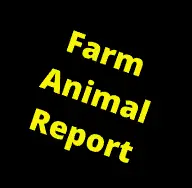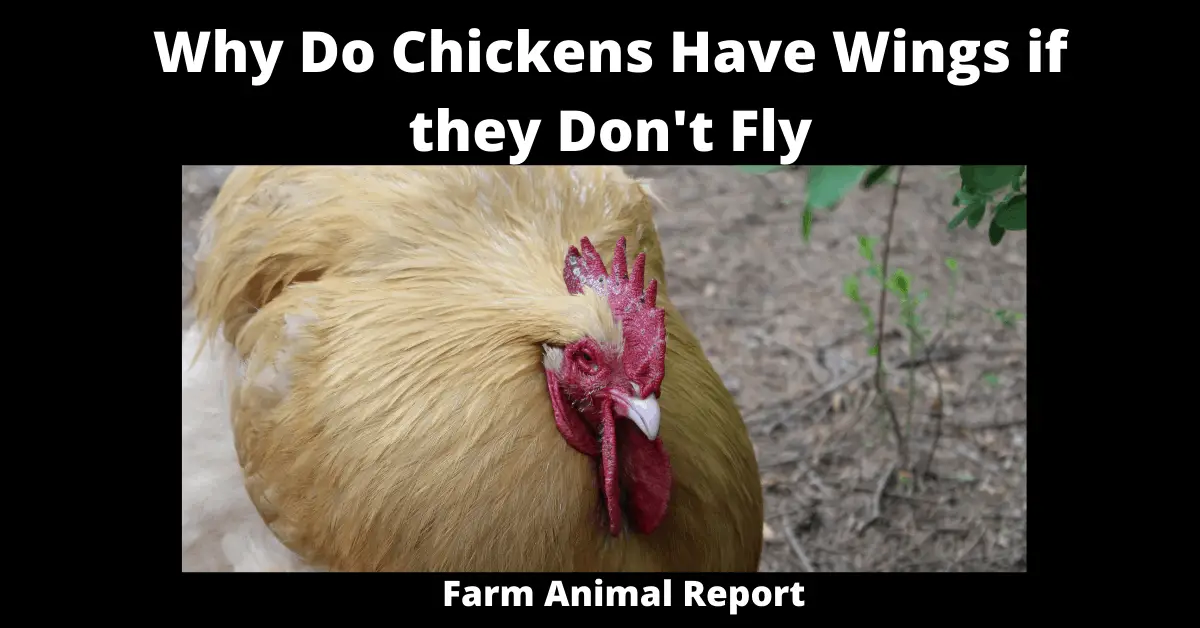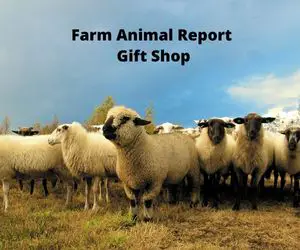Why Can’t Chickens Fly –As a general rule Rather, chickens are terrible fliers because their wings are too small and their flight muscles are too large and heavy, making it hard for them to take off, The pneumatic bones, air sacs, and muscles of chickens are less developed than eagles, parrots, Also in their domestication of heavier bodies flight has been bred out of them.
- Lack of Muscles: Chickens have small chest and flight muscles, which limits their ability to flap their wings strongly enough to achieve lift.
- Heavy Weight: Chickens are much heavier than other flying birds, such as sparrows and falcons, which makes it harder for them to achieve lift.
- Short Wings: Chickens have short wings, which means they cannot generate enough lift to sustain flight.
- Poor Wing Structure: Chickens have wings that are not well suited for flight. The wings are rounded and have an unusual shape compared to other birds.
- Lack of Balance: Chickens have difficulty maintaining balance in the air and lack the agility to maneuver quickly.
- Poor Vision: Chickens have poor vision, which makes it difficult for them to judge distances and navigate in the air.
- Lack of Coordination: Chickens have difficulty coordinating their wings and legs for flight, making it difficult for them to stay aloft.
- Fear: Chickens have a fear of heights and can become easily scared, which can make them reluctant to take flight.
- Evolution: Chickens evolved from a terrestrial ancestor and are not built for flight. Their bodies are not adapted to the demands of sustained flight.
Why Can’t Chickens Fly?
Why Can’t Chickens Fly? We all are misled by the word “bird” as we think that these animals can fly. Despite their large wings, chickens cannot fly in the same way as other birds. This animal can still glide and even fly low for a short time.
Everything also depends on the breeder, who may or may not have chopped down its wings, a technique used to prevent its escape. Why Can’t Chickens Fly?
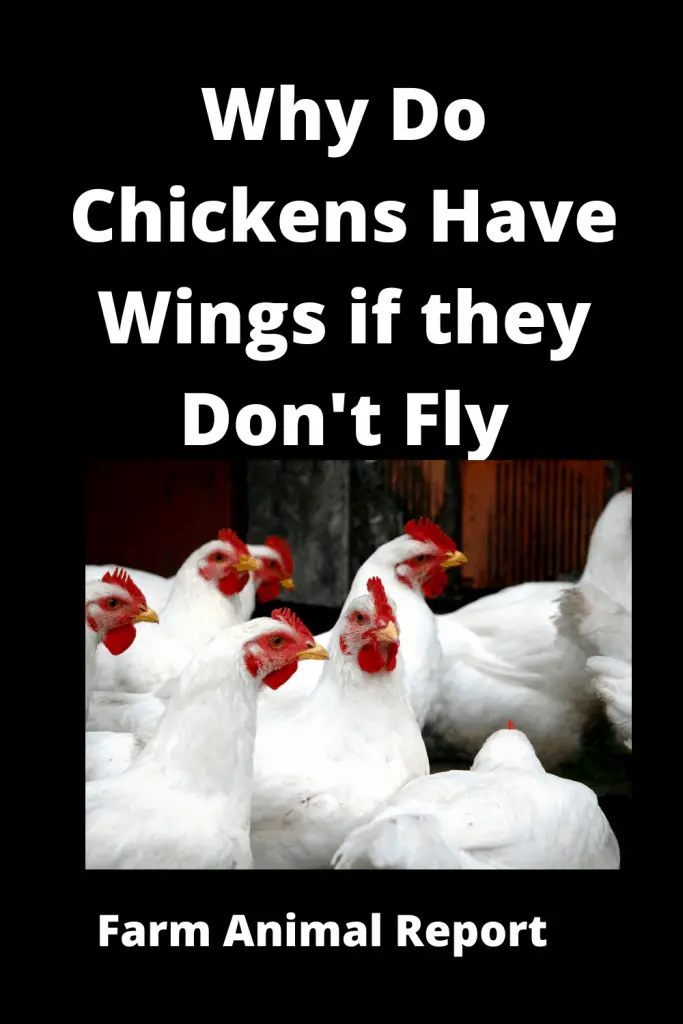
Why Cant Chickens Fly – As with other animals bred by humans – dogs or cows for example – hens have been selected to produce multiple breeds. These selections have, therefore, profoundly changed their morphology and behavior. The hens are heavier and their muscles are no longer sufficient. Raising chickens, In a few generations, domestication has made the chicken, goose, and turkeys lose their ability to fly at a great altitude.
12 Ways to Make Money by Chicken Farming—Extensive Guidelines for Chicken Farmers
Note that the golden rooster, which still lives in the jungles of South and Southeast Asia, is perfectly capable of flying, especially to escape its predators.
Why Do Chickens Have Wings if they Don’t Fly | Flying
Raising chickens is one of the most domesticated animals in the world. The first domestic creations of the species probably appeared in Asia, about 4,000 years ago.
For More Resources from Amazon on Chicken Resources
Naturally, it feeds on insects, grains, seeds, fruits, and earthworms. On average, they live up to 16 years.
Why Chickens Can’t Fly / Historical Anatomy | Hens Fly | Birds
The wild chicken (Gallus ), a bird originally from India, China, and southwest Asia, is the closest ancestor we have domesticated for over 8,000 years. Unlike the wild hen, which can fly short distances, the domestic hen can barely lift off from the ground.
Scientific Facts
- evolution flightless birds
- hen flying mammals
- hens fly back
- lies primarily in their wings
- because of their bone structure and weight
- because chickens have big pectoral muscles their wings cannot fully
- because modern domesticated chickens have large bodies and small wings
For this reason, we can say that the chicken does not fly because her ancestor was not a great flier either. However, man’s intervention only made things worse for the chicken in this sense.
The pneumatic bones, air sacs, and muscles of chickens are less developed than eagles, parrots, etc.
Descendants of the dinosaurs, the beaked birds had teeth a few million years ago. But according to the ornithologists, since they did not need to chew their food they became useless and the beaked birds lost them.
Paragraph For Amazon Resources for Raising Meat Chickens
But in the chicken, the teeth have not completely disappeared from their DNA… Except briefly, during the development of the avian embryo, during which appeared a single tooth, called “egg tooth”, grows at the tip of the chick’s beak before falling. It is this “tooth” that allows it to break the shell when it wants to come out.
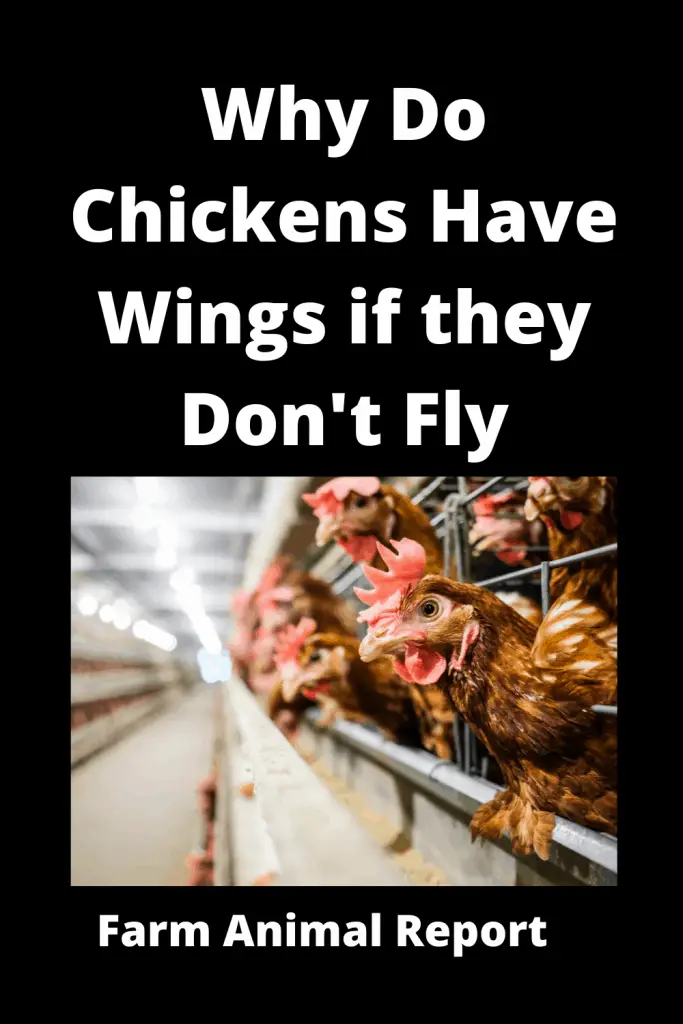
Production Of Chicken – Selective Breeding
Chickens are those land animals raised for food consumption.
In 2016, 66,000 chickens were raised and slaughtered worldwide, 7.4 billion chickens in the European Union, 800 million chickens in France.
Presently, 23 billion chickens live on Earth. 10 times more than any other species of bird and 40 times more than the number of sparrows. Researcher Carys Bennett reports that the total mass of domestic chickens is three times that of all wild bird species combined.
Standard Chicken Farming
In France, the raising of chickens is mainly intensive since more than 80% of the birds are raised according to this mode of production.
In this type of breeding, birds are kept at 22 per square meter on average in large closed buildings. Unlike some chicken farms, in France, broilers are not reared in cages. The great proximity between animals is a great source of discomfort and stress for birds.
The high densities, as well as the presence of litter often dirty and wet (the latter is rarely changed between the arrival of the chicks in the farm and their departure for the slaughterhouse a month later), helps in the spreading of diseases. Intensive farming is, therefore, one of the culprits in the outbreak of avian flu-like epidemics.
Intensive breeding chickens come from fast-growing strains, genetically selected to give individuals which grow quickly.
This growth is more rapid over the centuries since the birds reach today their slaughter weight in 35 days, which is 4 times faster than in 1950. This rapid growth is likely to cause locomotive problems in birds.
More than 30% of the chickens die inbreeding because of these conditions of production. To limit the mortality rate and increase the productivity of the birds, antibiotics are often distributed in the food of chickens.
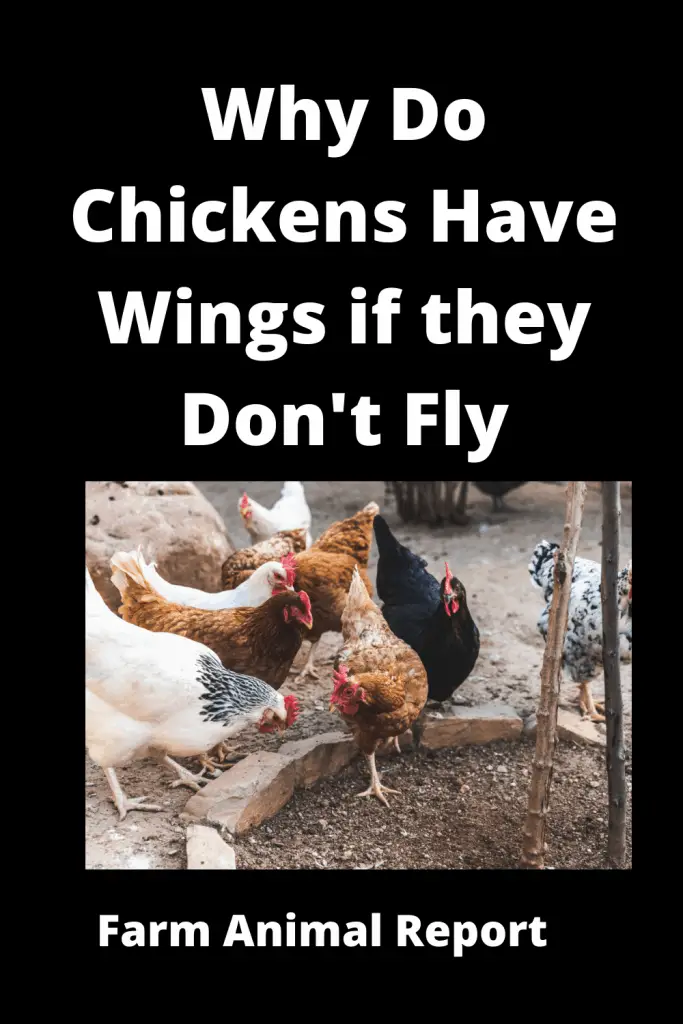
Chicken farming is regulated at the European level by the European Directive for the protection of broiler chickens. Entered into force in 2010, this text is regularly criticized by animal protection associations as insufficiently protective to ensure animal breeding conditions without suffering.
Chicken Slaughtering
To be brought to the slaughterhouse, the chickens are picked up by hand or by machine, most often by specialized companies. This stage of production is often a source of significant stress and suffering for animals already weakened by their breeding conditions and genetic selection.
The transport time of the animals is regulated by the European regulation which authorizes traveling of 12 consecutive hours without access to water. The most common method of slaughter is electronarcosis.
The birds come out of the transport boxes and hang them by their legs, on a metal rail. Head upside down, they are then immersed in an electric water bath, a step aimed at making them unconscious before their slaughter.
The European Food Safety Authority (EFSA) is strongly against this method of slaughter because of the great suffering it causes to chickens. INRA had already pointed out the suffering linked to this method hence causing fractures, dislocations, and hemorrhages to the poor animals.
Man’s Fault
It was through a genetic selection that man was selecting chickens, to satisfy his hunger. Thus, we can say that chickens are not natural species, since they are not, what they are today, due to “artificial selection” made by Man.
In the case of “meat hens”, they were selected based on their muscles, since they render more meat. These overweight chickens and their rapid growth, not only prevent them from flying, but they also suffer from many associated problems, such as joint and leg diseases.
It is its weight (between 2 and 3 kg), ( 4lbs – 8 Lbs) that prevents it from gaining altitude, and the low lift of its wings that prevents it from ensuring a gliding flight.
Conversely, the hen, chickens fly losing their ability to fly, learned to run faster by developing 3 fingers on each leg. If the hen no longer flies, it is because of man.. Man has long understood that this gallinaceous animal presented an important and inexpensive source of food.
Sometimes, chickens, since they are lighter, manage to have a proportion of weight more appropriate to the size of their wings, which allows them to fly short distances. However, the distance and height they can fly are so small that it is easy to keep them within a small fence so that they can not escape.
Egg Laying Hens
The so-called ‘egg-laying hens’ (chickens that ‘lay’ eggs) can produce about 370 eggs per production cycle, between 18 and 80 weeks of age.
The hen alone, due to the characteristics of its reproductive system, produces eggs without the need to reproduce with the rooster. When this happens, chicks are born. Their color is determined by the breed of the hen. So there are white, beige, and dark beige eggs. Species have a habit of setting up their own families, formed alongside one rooster for every ten hens
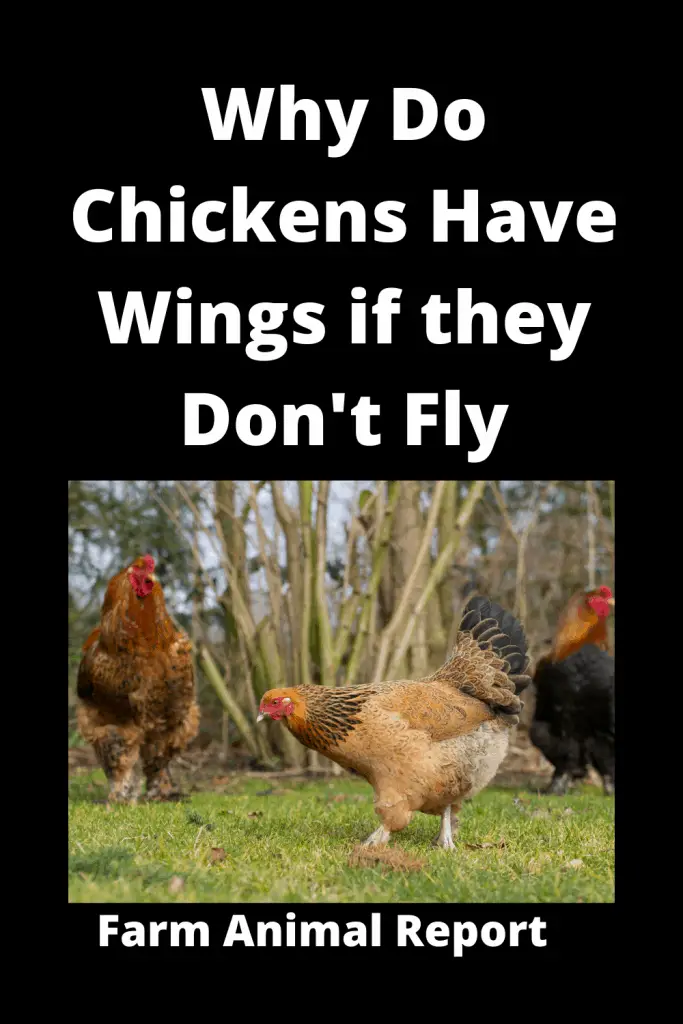
On the other hand, these hens were selected to lay more eggs. Laying hens can reach up to 300 eggs per year, unlike wild hens which lay between 12 to 20 eggs per year.
Although this selection does not significantly affect the flight capacity of these chickens (they can fly at short distances) it has other associated problems, such as the loss of calcium originating due to excessive production of eggs that are often associated with lack of exercise as they cannot move freely in little spaces, which is the clear exploitation of these animals at the hands of owners.
Although chickens have limited flight capabilities, they have many attributes that most people are unaware of. They are very intelligent animals, with logical reasoning abilities.
Why Don’t They Fly If They Have Wings?
This answer is simple, chickens do not fly because of their weight.
The domestic chicken is very heavy, as it is raised for the production of eggs and chicken meat. These animals are subjected to a form of breeding that helps them to increase their weight. Another problem is that these farm birds lay eggs every day, a fact that also increases the weight of these animals.
What Age can Chickens Fly?
Chickens are able to fly when they reach adulthood, which is usually between five and eight months old. However, some breeds can be flighty earlier than that.
A farmer can also clip a chicken’s wings to prevent it from flying away.
Could chickens Fly in the Past?
The debate over whether chickens could fly in the past has been a hot topic among historians for years.
Some argue that chickens were not built for flying and would have struggled to get airborne, while others believe that they may have been able to flap their wings hard enough to achieve limited flight. The truth is, we simply don’t know for sure. However, there are a few things we can look at to try and piece together an answer.
One example is the chicken’s skeleton. Modern chickens have very light bones, which helps them to stay afloat while they swim. However, some experts believe that the chicken’s ancestors had heavier bones that would have made it difficult for them to fly.
Another piece of evidence is fossilized chicken tracks. These tracks seem to suggest that chickens didn’t start walking on two legs until relatively recently in their evolutionary history. This could mean that they didn’t develop the muscles needed for flying until after they had already started walking on two legs.
Ultimately, we may never know for sure whether chickens could fly in the past. However, it’s certainly an interesting question to consider!
Can Roosters Fly?
Most people think that roosters can’t fly, but that’s not true! While they may not have the same powerful wings as other birds, roosters are actually quite adept at flying. They usually only fly short distances, but they can cover a fair amount of ground if they need to.
So, why don’t we see roosters flying around more often? Well, their large size and heavy weight make it harder for them to take off, and they also don’t have as many feathers as other birds. Additionally, roosters tend to spend most of their time on the ground where they feel more comfortable. But next time you see a rooster, don’t be surprised if he takes to the skies!
Could Chickens Fly in the Past?
Chickens have been domesticated for centuries, and their appearance has changed significantly over that time. In the past, chickens were mostly used for their meat, and their feathers were often used to make pillows and quilts.
Today, chickens are still used for their meat, but they are also bred for their eggs. As a result, they are typically larger and have more breast meat than their ancestors.
Their feathers are also different – they are now much softer and fluffier, making them better suited for use in down jackets and comforters. Interestingly, the domestication of chickens has also affected their ability to fly.
Chickens today are not able to fly as well as their wild ancestors – their bones are heavier, and their breast muscles are not as well developed. However, some chicken breeders have managed to create chicken breeds that can fly quite well. So, while chickens might not be able to fly as well as they once could, domestication has not completely eliminated their ability to take to the air.
Can Chickens Fly Yes or No?
Chickens are interesting creatures. Though they are typically thought of as ground-dwelling birds, they are actually able to fly – though not very far or very high. Chickens have a natural instinct to flap their wings and takeoff when they feel threatened.
However, they usually only fly for a short distance and don’t usually get more than a few feet off the ground. This is because chickens are not built for sustained flight; their breastbone is flattened, and their wings are relatively small in comparison to their body size.
Additionally, chickens typically only fly when they need to, conserving their energy for other activities like foraging for food or roosting at night. As a result, it’s safe to say that while chickens can technically fly, they’re not very good at it.
Do Chickens Fly Away?
When it comes to chickens, there’s a lot of misinformation out there. One of the most common myths is that chickens can’t fly. In actuality, chickens are excellent flyers and can easily travel long distances if they need to.
So why don’t we see them flying around more often? The answer is simple: food, shelter, and safety. Chickens are social creatures that appreciate having a flock to belong to.
They’ll usually only fly away if they’re forced to, such as when their coop is destroyed or if their food supply runs out. Additionally, chickens tend to roost in trees at night for protection from predators. So while it’s true that chickens can fly, they usually don’t because they don’t need to.
Can Chickens Fly over Fences?
Can Chickens Fly over Fences? Yes, they can depending on the height and their motivation for flying. I’ve seen chickens fly over 6-foot fences when they are motivated enough.
Usually, it’s because they see something on the other side that they want, like a tasty treat. But if the fence is too high or there’s nothing motivating them to fly, they likely won’t bother.
So, if you’re trying to keep your chickens contained, make sure your fence is high enough and there’s nothing on the other side that would tempt them to take flight.
The Domesticated Chicken
Chickens are a common sight on many farms. They are kept for their eggs and meat. Chickens are usually considered poultry. Poultry is a domesticated bird kept by humans for its eggs, meat, or feathers. Interestingly, all domesticated chickens come from a wild ancestor.
The red junglefowl is a tropical bird that ranges across much of Southeast Asia and parts of South Asia. The red junglefowl is the primary ancestor of the domesticated chicken. These birds get their name from their characteristic red wattle or fleshy ornament on their heads. Male red junglefowl is very aggressive during the breeding season. They will try to attract females by making loud calls and displaying their colorful plumage.
Chickens were first domesticated more than 10,000 years ago in Asia. It is not known exactly when or where chickens were first domesticated, but there are several theories about how it might have happened. One theory suggests that early humans may have caught young junglefowl and raised them in captivity. Another theory suggests that chickens may have been independently domesticated in different parts of Asia.
Today, chickens are widely considered one of the most common domesticated animals in the world. In 2018, there were more than 20 billion chickens in the world! That’s almost three chickens for every person on Earth! Chickens are kept by people in almost every country in the world. In some cultures, chickens are even considered good luck!
Types of Chickens
Did you know that there are more than 60 different types of chickens? Some of the most common types of chicken include:
• Layer chickens: These chickens are bred specifically for egg production. Layer chickens usually start laying eggs when they are about 18 weeks old.
• Broiler chickens: Broiler chickens are bred specifically for meat production. These chickens reach slaughter weight at about 6 weeks old.
• Dual-purpose chickens: Dual-purpose chicken breeds can be used for both egg and meat production. However, these chicken breeds don’t usually perform as well as a purpose-bred layer or broiler chicken breeds.
• Bantam chickens: Bantam chickens are smaller versions of standard-sized chicken breeds. They usually weigh less than 3 pounds (1 kg).
• Game birds: Game birds include chicken breeds such as the Pheasant, Quail, and Partridge. These birds are usually hunted for sport rather than being kept for egg or meat production.”
Chickens come in many different shapes and sizes! The largest chicken breed is the Jersey Giant, which can weigh up to 13 pounds (5 kg).
The smallest chicken breed is the Bantam, which can weigh as little as 1/2 pound (0.2 kg). The world’s tallest chicken breed is the Brahma, which can stand up to 3 feet tall! The world’s smallest chicken breed is the Serama, which can be as small as 9 inches tall! Chickens come in many different colors too! Some popular chicken colors include white, black, brown, red, blue, and green.”
The question of why chickens can’t fly has been asked for centuries. It’s a mystery that has perplexed both scientists and farmers alike. But the answer to why chickens can’t fly is ultimately rooted in both religious and historical reasons.
Why Chicken Can’t Fly
The most common explanation for why chickens can’t fly is that they have evolved to be ground dwelling animals. As a result, their wings have become too small to generate enough lift for them to take off into the air. The wings have also become too heavy to be able to provide the necessary thrust to keep them airborne. Additionally, chickens lack the necessary musculature to support the flight muscles needed to make sustained flight possible.
Why Don’t Chickens Fly?
From a religious perspective, the answer to why chickens don’t fly lies in the Bible. In the book of Genesis, God created the birds and gave them the gift of flight. However, when he created the chickens he chose to withhold this gift from them.
Why Can’t Chicken Fly?
From a historical perspective, the answer to why chickens can’t fly lies in the fact that they were domesticated by humans thousands of years ago. As they were bred for different qualities, such as size and egg production, they lost the ability to fly.
Why Do Chickens Have Wings If They Can’t Fly?
Chickens have wings for a variety of reasons. They use their wings to help them balance while they are running, and they also use them to help them take off quickly when they need to get away from predators. Additionally, their wings help them to maintain their body temperature, as they flutter their wings to keep cool.
It’s fascinating to consider why chickens can’t fly. The answers to this question are rooted in both religious and historical reasons. Ultimately, chickens have become too heavy and lack the necessary musculature to generate enough lift to take off into the air. Additionally, chickens have also been bred over the centuries to become ground dwelling animals, which has resulted in them losing the ability to fly.
Final Thoughts – Why Cant Chickens Fly?
Another explanation is that, during the evolution of such species, the chicken was domesticated and ended up losing the need to fly. Chickens also do not have pneumatic bones, air sacs, and highly developed pectoral and wing muscles.
Thus, we will hardly see a chicken flying because we only live with fat domestic chickens, raised only, to be consumed by men. Hence we can say, that chickens are very useful animals in terms of food but the avarice of man has prompted this poor fellow to lose its wings at the expense of just a few bites.
Family Sized Chicken Farm Egg Calculator
| Number of Chickens | Number of Eggs / Day | Number of Eggs / Week | Number of Eggs / Month | Number of Eggs / Year | Family Size | $ Value = .30 / Egg |
|---|---|---|---|---|---|---|
| 1 | .5 | 3.5 | 24 | 168 | 50.40 | |
| 2 | 1 | 7 | 28 | 336 | 1 | 100.80 |
| 3 | 1.5 | 10.5 | 42 | 504 | 151.20 | |
| 4 | 2 | 14 | 56 | 672 | 2 | 201.60 |
| 5 | 2.5 | 17.5 | 70 | 840 | 252.00 | |
| 6 | 3 | 21 | 84 | 1008 | 3 | 302.40 |
| 7 | 3.5 | 24.5 | 98 | 1176 | 352.80 | |
| 8 | 4 | 28 | 112 | 1344 | 4 | 403.20 |
| 9 | 4.5 | 31.5 | 126 | 1512 | 453.60 | |
| 10 | 5 | 35 | 140 | 1680 | 5 | 504.00 |
| 11 | 5.5 | 38.5 | 154 | 1848 | 554.40 | |
| 12 | 6 | 42 | 168 | 2016 | 6 | 604.80 |
| 13 | 6.5 | 45.5 | 182 | 2184 | 655.20 | |
| 14 | 7 | 49 | 196 | 2352 | 8 | 705.60 |
| 15 | 7.5 | 52.5 | 210 | 2520 | 756.00 | |
| 25 | 12.5 | 87.5 | 350 | 4200 | 1260.00 | |
| 50 | 25 | 175 | 700 | 8400 | 2520.00 | |
| 75 | 37.50 | 262.5 | 1050 | 12600 | 3780.00 | |
| 100 | 50 | 350 | 1400 | 16800 | 5040.00 |
Per Day / Per Week / Per Month / Per Year / Dollar Value
Rare Breed Chicken Farming
| Rare Breeds | Country of Origin | Eggs/Week | Average Weight | Price / Chicks |
|---|---|---|---|---|
| Black Penedesenca | Spain | 3-4 | 4-5lbs | $ 13.43 |
| Black Sumatra | Sumatra | 4 / Tinted in Color | 4lbs | $ 4.56 |
| Ameraucana | United States / Chile | 3 / 4 Blue | 5 lbs | $ 4.25 |
| Lavender Orpington | England | 4 / 5 Brown | 5 lbs | $ 6.08 |
| Partridge Chantecler | Canada | 3-5 / Brown | 7 lbs | |
| Wyandotte | United States | 3 - 5 / Tinted Brown | 6 lbs | $ 4.90 |
| Welsummer | Welsum Netherlands | 4 / Dark Brown | 5 lbs | $ 5.95 |
| Silver Grey Dorking | UK / Roman | 8 lbs | $ 5.95 | |
| Light Brahma | United States / China | Brown | 13 lbs | $ 4.90 |
| Silver Laced Cochin / Shanghai | China | 5-6 / Brown | 6 lbs | $ 4.90 |
| White Marans | Marans / France | 4 / Dark Brown | 5 lbs | $ 6.08 |
| Dominiques | United States | 4 - 5 / Brown | 7 lbs | $ 4.90 |
| Exchequer Leghorn | Tuscany Italy | White | 5 lbs | $ 4.25 |
| Silver Spangled Appenzeller Spitzhaubens | Switzerland | 5 | 4 lbs | |
| Buff Brahma Standard | Shanghai China | Brown | 13 lbs | $ 4.90 |
| Silver Laced Polish | Poland / Netherlands | 4-5 lbs | $ 5.95 | |
| White Sultan / Fowls of the Sultan | Turkey | 2 - 3 / White | 4-6 lbs | $ 7.75 |
| Mottled Houdan | Houdan Paris France | White | 4 - 5 lbs | $ 7.75 |
| Dong Tao / Dragon Chicken | Vietnam | 2/3 | $ 2500 - | |
| Ayam Cemani | Indonesia | 3 / Cream | 5 lbs | $ 50 - $ 2500 |
| Onagadori / Honorable Chicken | Japan | $ 49.00 | ||
| Polverara | Italy | 2 / 3 | ||
| Ixworth | Sussex UK | 4 / Cream | ||
| Naked Neck / Transylvanian Naked-Neck chickens. | Transylvania | 5 | $ 4.25 | |
| Campaign | Belgium | 7 / White | 5 lbs | $ 7.75 / Golden |
| Deathlayer / | German | 7 / White | $ 99.00 | |
| Serama / Smallest Chicken in the World | Thailand | .5 - 1 Lb | $ 39.00 | |
| Silkie / Silky | Chinese | 2 / Cream | $ 5.75 / White $ 5.75 / Blue $ 5.75 / Buff $ 5.75 / Black |
|
Types of Chicken Breeds
| Chicken Breeds | Origin | Meat/ Layers / Dual Purpose | Finished Weight | Eggs per Week | Weeks to Slaughter |
|---|---|---|---|---|---|
| Broilers | Canada/US/Europe | Meat | 3.3 lbs | 5 | 14 Weeks |
| Cornish crosses | England | Meat | 6.5 - 8.5 lbs | 3 | 8 - 9 Weeks |
| Jersey Giants | USA | Meat ( Intended to replace Turkeys) | 13 lbs | 4 | 8 - 9 Months |
| Hertigage Breeds | 6 - 9 months | ||||
| Delaware | USA Delaware | Duo | 6.5 lbs | 4 - large | 8 Months |
| Dorking | United Kingdom | Duo | 10 - 14 lbs | 5 - med | 5 Months |
| Buckeye | USA Ohio | Duo | 6 - 9 lbs | 4 - med | 5 Months |
| Rhode Island Red | USA Rhode Island | Duo | 6 b- 8 lbs | 5-6 | 5 Months |
| Leghorn | Italy | Eggs | 4 -5 lbs | 4 | 8 Months |
| Plymouth Rock | USA - Massachusetts | Duo | 7.5 lbs | 4 | 5 Months |
| Sussex | United Kingdom | Duo | 7 lbs | 4 - 5 - large | 5 Months |
| Wyandotte | Canada | Duo | 7 - 9 lbs | 5 Months | |
| Welsummer | Netherlands | Duo | 7 lbs | 4 / Week | 5 Months |
| Hamburg | United Kingdom | Eggs | 7 lb | 4 - med | 9 weeks |
| Black Australorp | Australia | Duo | \3 - 5 lb | 5 - med | 5 months |
| Buff Orpington | England | Duo | 7 - 8 Lbs | 4 - 5 | 8 months |
| Brahma | Meat | 11 lbs | 3 - med | 5 monthss |
Origin
Meat Breeds
Laying Breeds
Dual Purpose Breeds
Natural Foods for Free Range Chickens
| Insects They Love to Eat | Insects they will not eat |
|---|---|
| Earthworms | Elderbugs |
| Grasshoppers | Lady Bugs |
| Grasshoppers | Honey Bees |
| Ants | Wasp |
| Terminates | Bumble Bees |
| Grasses | Stink Bugs |
| Green Leafy | |
| Berries | |
| Hookworms | |
| Larvae | |
| Spiders | |
| Scorpions | |
| Beetles | |
| Spiders | |
| Grubs | |
| Mealworms | |
| Crickets | |
| Ticks | |
| Slugs | |
| Mayflies | |
| Parisite Eggs | |
| Gnats | |
| Cockroaches | |
| Japanese beetles | |
| Earwigs | |
| Butterflies | |
| Salamanders | |
| Tiny Lizards | |
| Tomatoe Worms | |
| Cabbage Worms | |
| Fleas | |
| Pill Bugs | |
| Amphids | |
| Misquitos | |
| Fly / Maggots | |
| Fire Ants |
Insects they will Eat
Insects they will not eat
Chicken / Poultry Breeder Associations
| Rabbit Association | Location | Link |
|---|---|---|
| US Poultry & Egg Association | United States | USPA |
| American Poultry Association | California | APA |
| Ohio Poultry Association | Ohio | OPA |
| National Chicken Council | United States | NCC |
| British Poultry Council | United Kingdom | BPCE |
| Poultry Club of Great Britain | United Kingdom | PCGB |
| Association of Poultry Breeders in EU | Europe | AVEC |
| Australian Chicken Meat Federation Inc | Australia | ACMF |
| Australian Poultry Hub | Australia | Poultry Hub |
